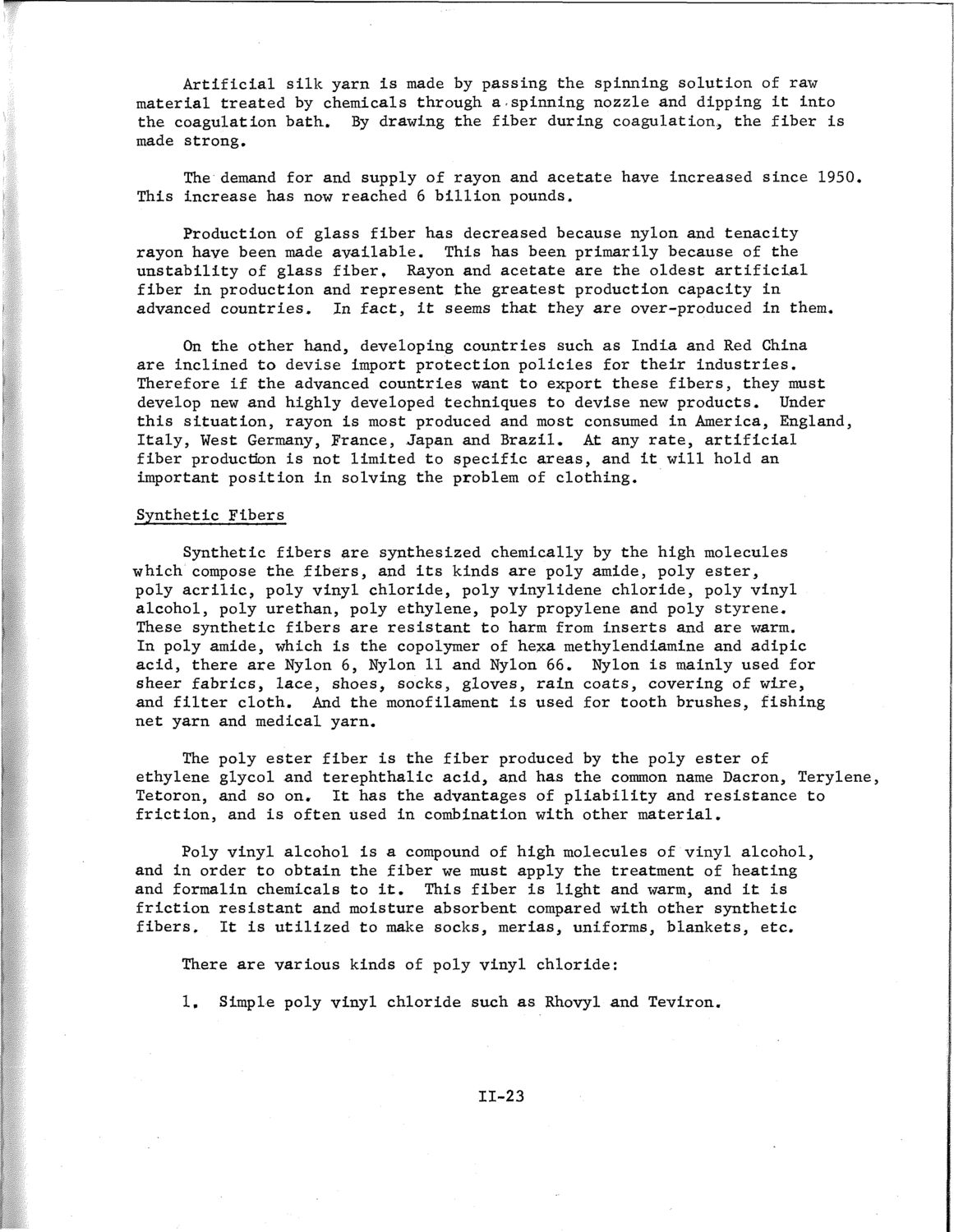| |
| |
Caption: SWE - Proceedings of the First International Conference of Women Engineers and Scientists
This is a reduced-resolution page image for fast online browsing.

EXTRACTED TEXT FROM PAGE:
Artificial silk yarn is made by passing the spinning solution of raw material treated by chemicals through a-spinning nozzle and dipping it into the coagulation bath. By drawing the fiber during coagulation, the fiber is made strong. The demand for and supply of rayon and acetate have increased since 1950. This increase has now reached 6 billion pounds. Production of glass fiber has decreased because nylon and tenacity rayon have been made available. This has been primarily because of the unstability of glass fiber. Rayon and acetate are the oldest artificial fiber in production and represent the greatest production capacity in advanced countries. In fact, it seems that they are over-produced in them. On the other hand, developing countries such as India and Red China are inclined to devise import protection policies for their industries. Therefore if the advanced countries want to export these fibers, they must develop new and highly developed techniques to devise new products. Under this situation, rayon is most produced and most consumed in America, England, Italy, West Germany, France, Japan and Brazil. At any rate, artificial fiber production is not limited to specific areas, and it will hold an important position in solving the problem of clothing. Synthetic Fibers Synthetic fibers are synthesized chemically by the high molecules which compose the fibers, and its kinds are poly amide, poly ester, poly acrilic, poly vinyl chloride, poly vinylidene chloride, poly vinyl alcohol, poly urethan, poly ethylene, poly propylene and poly styrene. These synthetic fibers are resistant to harm from inserts and are warm. In poly amide, which Is the copolymer of hexa methylendiamine and adipic acid, there are Nylon 6, Nylon 11 and Nylon 66. Nylon is mainly used for sheer fabrics, lace, shoes, socks, gloves, rain coats, covering of wire, and filter cloth. And the monofilament is used for tooth brushes, fishing net yarn and medical yarn. The poly ester fiber is the fiber produced by the poly ester of ethylene glycol and terephthalic acid, and has the common name Dacron, Terylene, Tetoron, and so on. It has the advantages of pliability and resistance to friction, and is often used in combination with other material. Poly vinyl alcohol is a compound of high molecules of vinyl alcohol, and in order to obtain the fiber we must apply the treatment of heating and formalin chemicals to it. This fiber Is light and warm, and it is friction resistant and moisture absorbent compared with other synthetic fibers. It is utilized to make socks, merias, uniforms, blankets, etc. There are various kinds of poly vinyl chloride: 1. Simple poly vinyl chloride such as Rhovyl and Tevlron. 11-23
| |